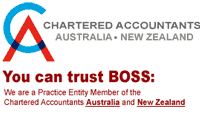Customer satisfaction.
Word of mouth.
Advertising.
They all play an important part in gaining your firm a wider customer base. But the single most important factor is understanding the purchasing habits of your potential future clients… a factor that is often overlooked.
And that’s where you price point comes in. Part intuition and part experimentation, pursuing the perfect price point is the best way to maximize the value of your services for both your clients and yourself. Following are four important points you should keep in mind when trying to hit that sweet spot on the price tag.
1. Follow the Dancing Dollar
There are two general pricing strategies:
- Revenue Optimization: Boiled down to its essence, this means pricing as high as your clients will allow without losing their business.
- Unit Sales Maximization. Getting your service out to as many people as possible, even if it means taking a hit on the sale price. Extended to an extreme, this is where we run into “predatory pricing,” where Firm A reduces its costs down, perhaps even to a deficit, in order to run Firm B out of business through loss of clients.
Your perfect price point lies somewhere between these two pricing methods. Seems pretty obvious, right?
However, what you might not be considering is that your perfect price point isn’t always static between the two. And that’s our first tip – always remember that your dollar sign is moving, dancing between the two methods, depending on outside factors like competition etc.
Study your position in the market. Consider your competition. Be fluid with your pricing when considering what state your firm is in right now.
For example, if you’re just starting out, then it may be of much more value to you to lower your prices for the potential gain of a much wider client base. While you may deserve more for sorting out a messy set of company accounts, you’re gaining a client that will stay with you when you do finally raise your prices, and they’ll tell their friends about you.
So consider – if you were to lower your prices by, say, 5% right now, would it be worth it for a gain of 5% in clients?
2. Perceived Value
Would you eat a 12-cent hamburger? Wear a $24 tuxedo to a wedding? Would you fly on a plane if you heard that the pilot was only getting $5 per hour?
This one’s quick and obvious – there is a downside to lowering your prices – it can scratch the perceived polish off of your services. There’s a line where potential clients will stop thinking of your services as being priced “reasonably” or even “at a steal” and they’ll just start thinking you are unprofessional, cut corners and lack knowledge to do a really good thorough job that will benefit the client.
And here’s where your dollar sign does the dance again – because in fact there can be a very healthy value to you if you price high. Very high. Think about lawyers – do you want the one who costs the price of a house just for showing up to defend you, or do you want the poor public defender who has worn out the elbows on his shirt? While that public defender may actually be the superior lawyer, the woman with the thousand dollar watch automatically reeks of resources and competence.
There can be a lot of value gained by pricing yourself as the Rolls Royce of the accounting world. Which pricing strategy would work best for you at this time?
3. Measure Your Value
Value Metrics. Metric – a means of measuring. Value – what you have to offer.
Your value metric defines not only what services you provide for a given fee but how you are charging.
E.g. A software company may sell different numbers of licenses at different prices. The price goes down as the volume of licenses goes up (the value becomes greater). They may also add-on specials such as 10 free support calls or unlimited support calls as part of a top tier package. (The value then is even greater).
With an accounting firm you could have a metric which is the frequency of management accounting reports you provide a business per year (e.g. monthly, quarterly, six monthly or annually). The increased value goes up in higher and higher tiers. Additional value based offerings could be bill payments, invoicing, budgeting, cash flow and strategic planning.
The most important facet of all of this is to remember to be clear as to what the increases in price revolve around. What service(s) do your clients value the most? Build your various price levels around the value(s) your clients want from you at the most basic level.
Once you have a pricing strategy in place with various increasing value propositions in exchange for rising prices, make sure your clients understand your pricing strategy without needing to have someone from your firm explain it to them. The last thing you want is for the waters to be muddy when it comes to what you’re charging for which services. Confusion or difficulties in purchasing your services will lead to a client’s lack of confidence, and that means missed conversions.
When done right, your firm will still be able to grow even when your acquisition of new clients occasionally fizzles a bit, because since your value metric revolves around services your clients will always need no matter how big they get, as they grow they’ll look to you as their trusted advisor for other valuable services.
4. Bundles, Tiers, and Packages
So we’ve already talked about tiers.
Let’s expand on that by including bundles and packages. What we’re looking at here is placing two or more services together, and then offering them at a price that’s lower than the sum of those individual services. While you’re now receiving less for one (or more) of the services, you’re still receiving income that you wouldn’t have otherwise received at all because the client had no initial interest in the extra service(s). You may even sell a service that isn’t even truly necessary.
Consider your home. Your local cable provider may have teamed up with an internet provider to give you the chance to buy a bundle for the both of them combined. That internet provider isn’t the best in the area, but since you get it at a discount… well, why not?
You’ve just purchased something you never would have bought if it was offered on its own. Added bonus – you haven’t sent any money to the internet provider’s competition.
Is there some additional service you can offer that requires little output from you, but will seem like a huge gain to your client?
An increasingly used tactic for selling packaged services is as follows. Not all packages are meant to sell. In this case, there’s a sweet spot in value for the seller, and the other packages around that sweet spot are purposely less attractive – some ridiculously high in price, others low in price but not giving enough in return. That means you can steer clients to the package that offers you the most income with the smallest amount of additional effort and/or offers just the services you want to focus on providing as a business.
So, for instance packages could be priced as follows:
Package 1 – Service A & B ….$2,000
Package 2 – Service A, B, C, D & E ….$2,500
Package 3 – Service A, B, C, D, E, F, G, H…. $10,000
In the above example you would expect most businesses to go for Package 2.
To be able to sell these packages, bundles or tiers, you must again be clear in what you’re selling, and understand what the buyer values the most. You can shift your tiers around, placing this greatest value into a slot that is also of the greatest value to you.
Last But Not Least… Discounts
There are two keys when it comes to using discounts to win new clients. The first is introducing urgency, and the second is offering value.
In creating urgency, you’re setting a due date and thereby nudging your potential client past the sense of this not being “the right time.” Suddenly there’s a very limited “right time” to get the services they were considering for a reduced price.
Price-wise, you have to go back to your overall strategy to decide if you’re going to offer a percentage discount, or a dollar discount. Percentages generally work better when dealing with lower dollar amounts – 50% is sexier than $50. But dollars are the better bet at higher prices, so you can show a big fat number behind that dollar sign.
The key here is that the two – urgency and offered value – must be used together. If you offer a huge discount but have no explicit end date, then that sense of urgency is wiped out. Conversely, if you have a one-week sale but only slice off a tiny amount from your price, the sale becomes meaningless when it comes to value.
Another way to discount is instead of purely slashing prices, you offer to knock off a percent from a certain service if your client brings in a new client. So you offer new Business A your “Advice For New Businesses” package… but you’ll give it to them for 10% less if they can get someone else to sign up with them (that second business also receiving 10% off). So they call up Business B who agrees, and they come to you together for that deal where each gets 10% off. Your “Advice For New Businesses” package is a pretty standard bundle of services, and it costs you little to no time or money to tailor it to both A and B. So for the one-time loss of 20%, you now have two new clients who will grow with you, steered onward to additional services as time goes on.
Like with the rest of our points, this is an experiment in getting to know your own business better – here you’re figuring out how to measure long-term gains (gained clients) versus short-term losses.
There is one great big caution sign here – charging too little too often will devalue the perception of your services. Don’t offer discounts for long periods of time or on a routine schedule. You want to keep your overall value up – offering a lot, for a little less, shouldn’t seem like something you have to do to stay in business. It’s generosity, not desperation.
In summary, it all comes down to getting to know yourself and your clients – what you offer, and what they value most.


